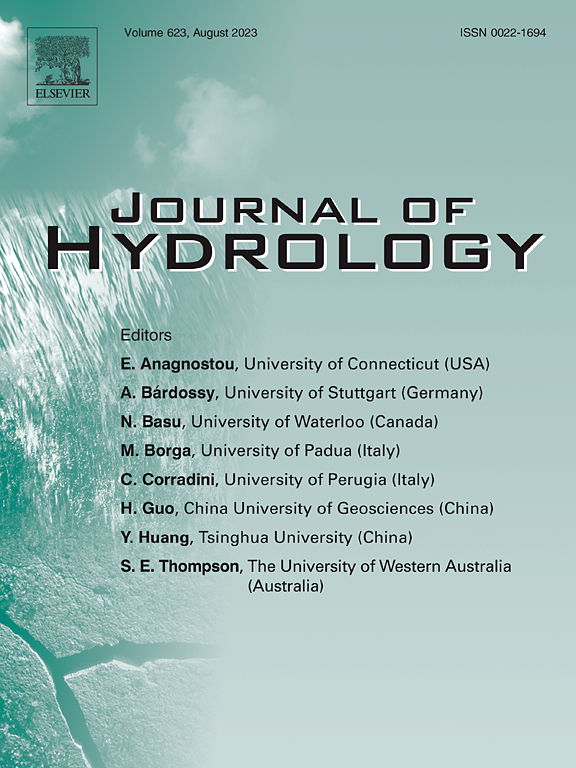Revealing the mechanism of electrokinetic remediation for lead-contaminated clayey soil by using molecular dynamics simulations
IF 5.9
1区 地球科学
Q1 ENGINEERING, CIVIL
引用次数: 0
Abstract
This study uses molecular dynamics (MD) simulations to investigate the electrokinetic properties of lead-contaminated Na-montmorillonite under varying cation exchange capacities (CEC) and lead ion concentrations in coupled electric and hydraulic fields, aiming to elucidate mechanisms that govern lead ion distribution and pore water flow. Results reveal that Pb2+ and Na+ ions form hydration layers in water, migrating under an electric field and contributing to electro-osmotic flow. Electro-driven and hydraulic-driven processes are shown to be independent and can be linearly superimposed, with maximum removal efficiency achieved when the electric field aligns with the hydraulic gradient. The concentration of wall charges ϕe is employed to integrate MD simulation results with the traditional electro-osmosis model, which is confirmed by literature data and illustrates the validation of the established molecular model. Analysis indicates that CEC enhances electro-osmotic flow within a specific range (<100 cmol kg−1), while the presence of lead ions has an inhibitory effect. Based on electric double layer (EDL) theory, the coupling impact of these two factors on electric potential ψ(z), ζ-potential, and thickness of the diffuse layer are investigated. The results show that increasing CEC significantly raises potential ψ(z) and ζ-potential, while higher lead ion concentrations compress the EDL and reduce electro-osmotic efficiency. This study provides theoretical and technical insights to optimize electrodynamic remediation parameters for practical applications in lead-contaminated soil remediation.
利用分子动力学模拟揭示铅污染粘土的电修复机理
本研究利用分子动力学(MD)模拟研究了铅污染钠蒙脱土在不同阳离子交换容量(CEC)和铅离子浓度耦合电场作用下的电动力学性质,旨在阐明铅离子分布和孔隙水流动的影响机制。结果表明,Pb2+和Na+离子在水中形成水化层,在电场作用下迁移,促进电渗透流动。电驱动和液压驱动过程是独立的,可以线性叠加,当电场与液压梯度对齐时,去除效率最高。利用壁面电荷浓度(ϕe)将MD模拟结果与传统的电渗透模型相结合,得到文献数据的证实,说明所建立的分子模型的有效性。分析表明,CEC在一定范围内(<100 cmol kg−1)对电渗透流动有促进作用,而铅离子的存在则有抑制作用。基于双电层(EDL)理论,研究了这两个因素对扩散层电势ψ(z)、ζ-电势和扩散层厚度的耦合影响。结果表明,CEC的增加显著提高了电位ψ(z)和ζ电位,而较高的铅离子浓度压缩了EDL,降低了电渗透效率。该研究为优化电动力修复参数在铅污染土壤修复中的实际应用提供了理论和技术见解。
本文章由计算机程序翻译,如有差异,请以英文原文为准。
求助全文
约1分钟内获得全文
求助全文
来源期刊

Journal of Hydrology
地学-地球科学综合
CiteScore
11.00
自引率
12.50%
发文量
1309
审稿时长
7.5 months
期刊介绍:
The Journal of Hydrology publishes original research papers and comprehensive reviews in all the subfields of the hydrological sciences including water based management and policy issues that impact on economics and society. These comprise, but are not limited to the physical, chemical, biogeochemical, stochastic and systems aspects of surface and groundwater hydrology, hydrometeorology and hydrogeology. Relevant topics incorporating the insights and methodologies of disciplines such as climatology, water resource systems, hydraulics, agrohydrology, geomorphology, soil science, instrumentation and remote sensing, civil and environmental engineering are included. Social science perspectives on hydrological problems such as resource and ecological economics, environmental sociology, psychology and behavioural science, management and policy analysis are also invited. Multi-and interdisciplinary analyses of hydrological problems are within scope. The science published in the Journal of Hydrology is relevant to catchment scales rather than exclusively to a local scale or site.
 求助内容:
求助内容: 应助结果提醒方式:
应助结果提醒方式:


